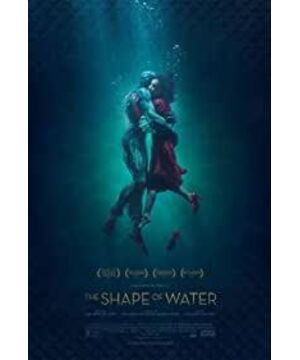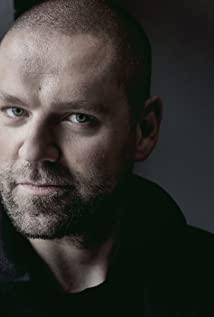Since "The Shape of Water" won the Oscar for Best Picture, the debate about it has never stopped.
Opponents say that it is purely because of political correctness to win prizes, and it is suspected of deliberately catering to it.
Proponents believe that it has made the mutual comfort of two lonely souls extremely moving.
In any case, with four Oscars, on March 16, "The Shape of Water" was finally officially released in mainland China.
Let me talk about the theater experience first, because of the deletion, the two words: terrible.
However, even if it is not deleted, the story and logic of this Oscar's best movie are problematic, which is really a bit watery.
"The Shape of Water" is perfect in terms of audiovisual.
Basically, it can get high scores on all the technical projects you can think of: lighting, photography, scenery, music, performance...
The scenes at the beginning of the movie are full of light and shadow, fully expressing the gentle and dreamy beauty of water.
Toro originally planned to start with an underwater bus stop, but because he didn't want to use computer animation to achieve this effect, he changed it to an underwater bedroom during the actual shooting.
Alexander Despra, who won the Oscar for best original soundtrack with "The Shape of Water", is not a mere name. The soundtrack he made for the movie did indeed achieve what he claimed was the effect of "singing faintly from the distant water", hazy and pure.
Despra had previously won the statuette for the first time with the "Budapest Hotel".
In terms of color, "The Shape of Water" is even more characteristic of Toro. Not only are the colors bright, but also rich in metaphors.
For example, it is obvious that the heroine was initially dressed in green all over.
This is also the main color of the experimental base in the movie, and it feels lifeless.
As the heroine gradually fell in love, she became more and more red.
After some kind of relationship, the hostess put on a red dress.
At the same time, red is also used in movie theaters.
In the theater decoration, Toro used a lot of red.
Red symbolizes love and Toro's love for movies. He said at the Toronto Film Festival: "At that time I wanted to make this film, both about love and love for movies, and the two are the same to me."
However, Toro's love for movies can be perceived in perfect audiovisual language.
But the love in "The Shape of Water" is hard to perceive.
In an interview with Variety Show, Toro said: "I want to create a new type of relationship between'beauty and beast'. But the princess is not perfect, and the beast does not need to be transformed into a human form to get true love."
It may be possible to regard "The Shape of Water" as the dark version of "Beauty and the Beast".
Toro tried to talk about a true interracial relationship, which was a courageous choice in the subject matter. Moreover, as a typical black fairy tale movie, the male lead in "The Shape of Water" is this one.
Looks like the murloc in "Hellboy".
Because black fairy tale movies spread the idea: imperfect people are also qualified to love, and this love is more real because it has no prerequisites. (For details, please refer to: Black fairy tales like "The Shape of Water" have love )
The interpretation of love in "The Shape of Water" is that two imperfect individuals meet each other.
Toro said: "This is a movie about love, who loves others, and bravely confronts aliens."
Why the hostess fell in love with the murloc, said clearly in the line : "He looked at me like that. I don't care about my flaws and shortcomings. What he sees is my truest appearance."
Why is the movie called "The Shape of Water", literally translated "The Shape of Water". This is because water is invisible but ubiquitous, symbolizing love and understanding.
Because of the murlocs, the heroine got the love and understanding she wanted.
In this scene of using sign language to explain the mood, the mood almost overflows the screen.
However, this is only a unilateral brain supplement for the heroine.
There is a scene where the heroine sings in fantasy and dances on Broadway.
The song that I sang is the best original Oscar song in 1943, "You Never Know".
"You will never know how much I love you..."
Then, she danced in fantasy.
The murloc who danced with her looked like a person at this time.
This dance comes from the 1936 movie "Love on the Sea".
After the fantasy was over, the murlocs opposite had no response.
Just looked at her dumbly.
Obviously, in the heart of the heroine, the murloc she loves still has a human soul. She is also in this fantasy, getting the understanding and love she wants.
The murloc did not give the hostess the feedback she wanted.
The "alien" murloc in the movie did not become the "human monster" that the heroine imagined, but just a monster.
First of all, the murlocs never show any "humanity" in the film.
The most obvious manifestation of this point is of course a "major criminal case" with an extremely bad nature and extremely bloody scenes.
This scene will probably cause a lot of "cat slave anger".
In addition, a series of animal-like behaviors of the murlocs are also interesting.
For example, he scratched his benefactor casually, fled around when frightened, and tried to play with the cat without giving up.
All this shows that the murloc is just a monster with a certain IQ from beginning to end, and will not meet the fantasy of the heroine.
Look at this pure and innocent little eyes.
For this murloc, the hostess is just a human being who actively approached him and took care of him.
In the end of the film, the heroine and the murloc live happily together, not intuitively, but through the narration of others, and the narrator clearly has a subjective desire to "hope them to be happy".
Our common love, even the love in black fairy tales, both parties will have an interaction that clearly expresses their love and mutual satisfaction.
In "The Shape of Water", it doesn't. The love of the heroine is unilateral expression and self-satisfaction, and it is difficult to confirm whether the murloc really admires the heroine.
This kind of love may be difficult for the audience to resonate. After all, it is difficult for the general public to understand, but it may feel that this kind of love is very watery.
For example, some viewers commented like this.
The audience does not generally have the receptivity and understanding that the director hopes.
But this is just a difference in thinking.
The real water in "The Shape of Water" lies in the story and logic.
As we all know, Toro is extremely obsessed with monsters. He loves monsters so much that every movie must have monsters (see: "The Shape of Water" director specializes in monster movies, these three are the best ).
The filming of "The Shape of Water" is a tribute to "Black Lake Demon".
The scene that made Toro's heart in "Black Lake Monster" is matched with a soundtrack with a thrilling atmosphere.
It also means to make up for childhood regrets.
"The Shape of Water" embodies the director's wish for "the monster and the heroine will finally be married".
The plot of "The Shape of Water" is very simple. It can be summed up in one sentence: the dumb cleaner loves the murloc in the laboratory. After all the hardships, the dumb rescued the murloc and successfully escaped the hunt. They lived happily together. .
This simple story collides with many movies.
For example, "Modern Mermaid" directed by Ron Howard in 1984 and starring Tom Hanks and Daryl Hannah collided with it.
The plot of "Modern Mermaid" is that the male protagonist falls in love with the mermaid studied in the laboratory. Scientists with a conscience help Allen rescue the mermaid from the laboratory, and they live happily ever since.
One person, one fish, meet through the glass.
The mermaid and the male lead kissed under the water to make him breathe again.
The comment section of "Modern Mermaid" has similar views.
There is something more similar than "Modern Mermaid".
The key plot of "The Shape of Water" is that the cleaner loves the alien in the laboratory, and then transports it out with the laundry cart, there is exactly the same correspondence.
And the heroine in Let Me Hear You Whisper is also getting older.
Toro said that the inspiration for "The Shape of Water" was the suggestion of the novelist Daniel Routh (who served as the executive producer of "The Shape of Water").
Daniel Routh once praised the works of Paul Zinder, and Let Me Hear You Whisper is exactly the script of Paul Zinder.
To say that these are all coincidences, it can only be said that the plot of "The Shape of Water" is too clichéd.
During the entire viewing process, basically when you see a character come out, you know what he is going to do next, and when you see a scene, you know what will happen next.
No surprises, no surprises, people just dozed off.
The only difference from the general routine may be the symbolic expression inserted by the director in the film. One of the most critical is the theme of "reshaping God."
The implantation of the theme of "remodeling God" actually hindered the deep thinking of the story.
Let me first explain what is meant by "reshaping God".
In the film, Toro buried a lot of clues in an attempt to subvert the "God's human form theory".
The villain said confidently at first: "Don't you think God looks like (murloc)?"
The villain firmly believes in "God's human form theory."
At the end of the film, he also admitted to the murloc: "You are really a god."
Murloc is a hint of "god", and it is also reflected in many details of the film.
The hostess lives in the cinema, and the cinema has been showing the biblical epic "Ruth".
The windows of the hostess's room are also typical church style.
"The Shape of Water" also draws heavily on the biblical epic "Samson and Dalila". Dalila cut off Samson’s hair and made him lose his power. In the end, Samson regained his power out of faith in God and defeated him. evil.
The villain once quoted this allusion to express his firmness in his own path. But in the end he failed. So the whole story became the reversal of "Samson and Dalila".
Obviously, in "The Shape of Water", the fish talent is the true God.
This brings up two problems.
The first problem is that the film has a lot of logical flaws.
Just "Why can he heal the wounds caused by thermal weapons, and the villain has caused all kinds of misery in the front", no matter how round it is.
Please explain to the director.
This problem is not serious compared to the second problem.
The second problem is that the film wanted to express care for all marginalized people, but it was not successful.
The most marginal murloc in the movie was elevated to a god.
This is almost the same as the "Black Panther" behavior of "extremely catering to black people in order to show that we are not racially discriminatory." (For details, please refer to: Disagreement: Black Panther is also a spokesperson for racial discrimination )
"Black Panther" deliberately caters to the black community and promotes the supremacy of blacks.
It is not that we cannot imagine a world where blacks dominate, but at least it must be based on their real hard work and struggle to show their beautiful character. This is the real care for the black community.
As shown in "Black Panther", a piece of pie in the sky compensates for the disadvantaged, but it shows arrogance. Even from the beginning to the end of the movie, it exudes an atmosphere of "I'm worried that black people are uneducated and cannot understand, so I deliberately be a little stupid".
The problem with "The Shape of Water" is also here.
When Toro put the theme of "reshaping God" into the movie, the so-called "alliance of marginal figures" was also broken. Because, when an oppressed alien is directly promoted to God, we simply cannot have any sense of substitution, nor can we compare our hearts to our hearts.
Not to mention the inability to empathize with the aliens, or even the "oppressed" marginal characters in the film. Not to mention understanding the deep-seated problems that cause marginalized people, and thinking about the root cause of gender-ethnic inequality.
Also, when "God" changes from white to murloc, this is nothing but a false reversal of the old order.
Reversing old conventions does not mean that the movie tells a larger truth. It only subverted the roles of good and bad people, but did not change anything, let alone reshape the order of the entire world.
Born to be human, we want to live as equals, it is better not to have a God on our heads.
Looking back on the whole "The Shape of Water", the audio-visual is extremely beautiful, the metaphor is deep, the tribute to the old movies is everywhere, and the bold attempt to describe the love between aliens and humans.
It is a pity that the plot is too clichéd and the logic is flawed, but metaphors hinder the expression. This makes "The Shape of Water" the reason why it won the best film Oscar is even more suspicious. Political correctness is obviously its biggest weight. Even in the end, even the care it tried to express for the marginalized has changed.
Text/rare bamboo
This article was first published on the public account: Overhead (ID: jiakong2017), focusing on the four major areas of science fiction, fantasy, suspense, and thriller, welcome to pay attention.
View more about The Shape of Water reviews











